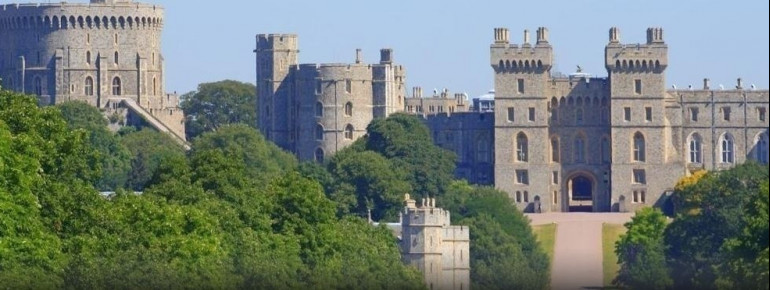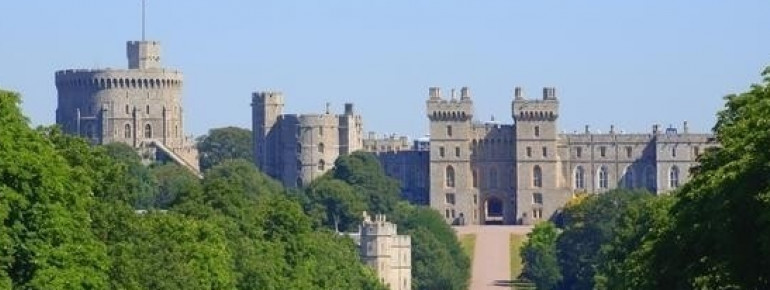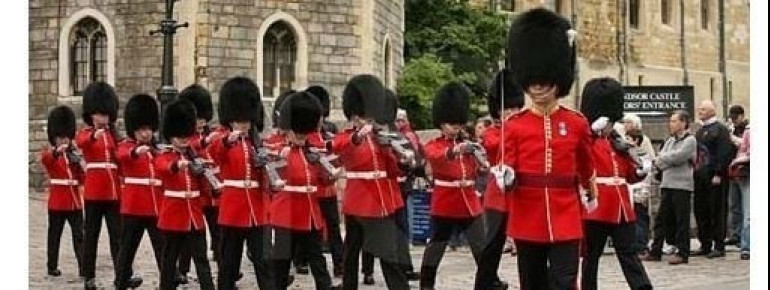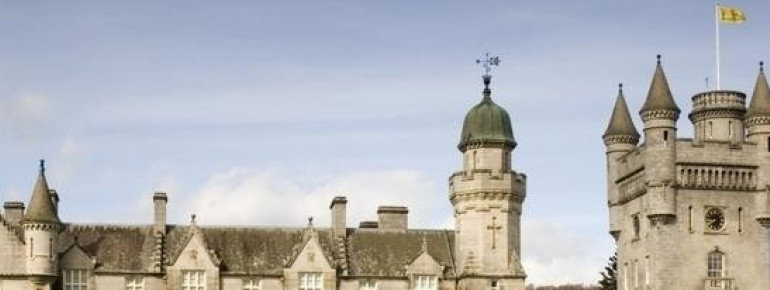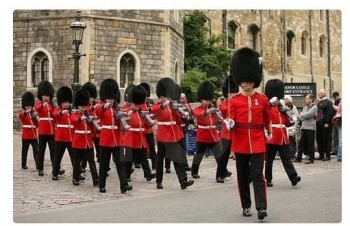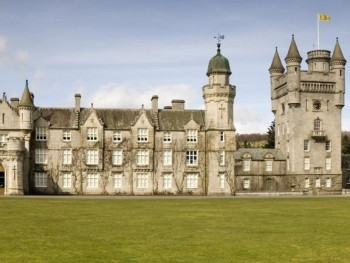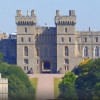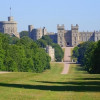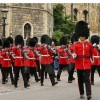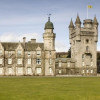Contents
Description
Windsor Castle is one of the official residencies of Queen Elizabeth II. A visit here is bound to be a fantastic experience. Worldwide, it is the largest and oldest still inhabited castle. It has a Gothic chapel as well as numerous residential and working buildings spread over 10 ha of land. Enjoy a fascinating guided tour through the Queen's most favourite residency.
State Apartments
The state rooms in baroque style once used to be a British prestige project and were seen to be standing in direct competition with Versailles Palace in France. Up to this very day, the castle has been home to 39 monarchs in total. Bigger events or ceremonies are held in St. George's Hall, a 185 ft long room (56 m). There is room for 160 persons to be taking place at the big round. The staff of the castle usually uses “tools” such as rulers to position the table arrangement as exactly as possible to make sure it's all perfect for the pictures and according to royal practices.
The state apartments are famous for their art collection, including artwork by Rubens, Van Dyke, Breughel, Bronzino, Canaletto and Gibbons. Apart from the impressive art collection you find the Waterloo Room in the castle. It serves the last honour of all soldiers who were victorious over Napoleon in the Battle of Waterloo. The room itself is filled with paintings by Sir Thomas Lawrence. Make sure you don't miss the Indian carpet, the largest seamless carpet in the world. It is said that one needs more than 50 men to roll the carpet.
Semi-State Rooms
The best time of the year to be visiting Windsor Castle is between October and March when the spectacular private rooms of George IV are made publicly accessible. These rooms are richly ornamented with fine objects as George IV was inclined to theatrical performances. Nowadays, the Queen uses those for official appointments.
St. George's Chapel
This Gothic chapel serves as a cleric centre of the Order of the Garter, the highest order of knights in Britain. An impressive highlight is the fan vault made from stone, where ten former kings and members of royal families rest in peace, for instance, Henry VIII with his third wife Jane Seymour or Charles I and many other members of royal aristocracy. Three times a day a service is held in the chapel, which all visitors are invited to join when here. There is one exception, though. On Sunday, the chapel's doors remain closed.
In total, 14 royal weddings have taken place here.
Queen Mary's Dolls' House
This doll house is probably the most famous and largest one of its kind worldwide. Around 1,500 craftsmen were busy for more than three years (1921-1924) building this little girls' dream as detailed as possible. All was designed by Sir Edwin Landseer Lutyens, the architect of this masterpiece.
It is filled with miniature replicas of real-life furniture, decoration and facilities of the castle. You find, for instance, the library at a scale of 1:12 including replicas of original books, the wine cellar filled with fine wine and a garden. The entire dolls' house is a small wonder of technical achievement as it is fully fitted with electrical light and equipped with full sanitary facilities, including a functioning toilet flushing.
Changing the Guard
Changing the guard is a traditional event that is accompanied by a military band. Each day, exactly at 11am on the dot you may witness this 45-minutes long ceremony. This tradition has lasted since 1660 consisting of five infantry units (Grenadier, Coldstream, Scots, Irish and Welsh Guards and two troops of the house (Life Guards and Blues and Royals). Guard Mounting starts with the formation of the Windsor Castle guard while the new guard moves in with music. After the change and the swap of sides of the guards, the leaving guard moves on towards the city heading to the Victoria Barracks. What a ceremony!
Historical Information
In 1078 William the Conqueror had a wooden castle built by the Thames. The construction works were finished 16 years later. When William decided to have it built, he had in mind to secure the western parts of London and thus create a zone of protection, but because it was so close to the capital and the royal hunting forest it was already used as a royal residency.
Change of Use
Henry I already made himself comfortable in the castle in 1110. His grandson Henry II turned the simple castle into a palace. He built two separate royal premises, a public one and an official state residency on the grounds of the fortress. Additionally, he had built a smaller private residency at the northern side of the Upper Ward serving as his own flat and for the purpose of administrative work.
First, the castle was surrounded by a wooden wall, but Henry II began to build a protection wall made entirely of stone in the late 12th century. He additionally exchanged all buildings of the Lower Ward, originally built by his predecessor, and added a large chapel with a cloister in the courtyard. On behalf of the bishop of Winchester, William of Wykeham, Edward III ordered the extension of the old castle in 1312 by investing around £ 50,000. That amount of money was a fortune in those times. After it had gone through makeover processes, it now looked more like a Gothic palace instead of a fortification. The castle was extended by an inner gatehouse with cylindrical towers and the northern side was facilitated with state rooms and separate bedrooms. The king's objective was to create a unified palace, intertwining official and public rooms with private ones. After he had died his grandson Richard II continued his work. It was Edward IV, the great-grandson of Edward II, who then began to modernise the large chambers of the state rooms and built a gallery.
Turning a Fortification to a Palace
In the middle ages, kings used to spend the majority of their time reconstructing their castles and turning them into a splendid residency. As there had already been done lots of work before the Tudors moved in, the only real change that Henry VII made was to build a a narrow area in the western parts of the state apartments. His successor Henry VIII had a gate constructed with his name at the bottom side of the Lower Ward and had ordered the construction of the wooden terraces with a bower at the north side of the Upper Ward to be able to watch the hunt in the park better.
On behalf of Elisabeth I, a large restoration programme was initiated as some parts of the palace were extremely run down. In addition, she had a long gallery built allowing a view on the Northern terrace.
The architect Hugh Mai was appointed by Charles II to organise the modernisation of the royal apartments which then became the most impressive baroque royal rooms to be known in England. This was made possible through new textiles and splendid tapestry that were only presented while the monarch was residing on-site. This fundamental transformation of the former fortress to the wonderful palace it is today was finished in 1683.
Extension of the Palace
Upon the order of George III, John Yenn reshaped the baroque apartments located at the north side of the courtyard to neoclassical ones. In the eastern Upper Ward, a music room and a dining room were built. George's main concern was to give the building a Gothic touch. That's why later all office rooms were redone too. George IV continued his predecessor's construction work in Gothic style. Furthermore, he wanted to reshape the entire outward appearance of the palace to make it look even more impressive. A 184 yd (168 m) long gallery (Grand Corridor) was added at the Upper Ward alongside a new and large entrance for the state apartments. The investments for the Waterloo Chamber and the George's Hall totalled £ 300,000.
As Queen Victoria's predecessor had numerous and large restoration works done, the only change she ordered was the construction of a small private chapel: The Lantern Lobby. Unfortunately, a fire broke out on 20 November 1992 in this very chapel. It spread quickly and destroyed many rooms. It took the restoration team around the Duke of Edinburgh five years to restore both all buildings and the glory of the old days.
Interesting facts
- Windsor Castle is among the 3 best rated Tourist Attractions in Great Britain and Northern Ireland.
How to get there
By Car
Coming from the centre of London
The distance is only 23 mi (37 km), but due to the traffic in London, you might need around 50 to 60 minutes to get here. Starting at Buckingham Palace in London, you keep to the right and head towards the Hyde Park on Constitution Hill Street. In the roundabout you take the second exit and slightly turn left onto the Knightsbridge. After another half a mile (0.8 km) you turn right into the Brompton Street (A4), passing the famous shopping mall Harrods on the way. Follow the road alongside the Thames until you get to the roundabout, which you leave via the third exit, ending up on Hogarth Street (A4). You continue for 11 mi (17.7 km) on the M4 and follow the sign Airport/ The West/ Heathrow until you take Exit 5, changing to A4/ B470 in the direction of Colnbrook/ Datchet/ Langley. Take the second exit in the next roundabout (Major's Farm Rd/ B470), passing three more roundabouts and keep left on High Street (B470). At the junction, you turn left and keep driving alongside the Thames (Windsor Rd/ B470) until you turn left into Thames Street at the Royal Theatre. And here you are at Windsor Castle.
Coming from the direction of Heathrow Airport, London
The distance from Heathrow Airport is about 8 mi (13 km). Due to London's traffic situation, the journey might take up to 25 minutes. You head towards the northwest in the direction of Beacon Rd and take the first exit in the roundabout leading to Southern Perimeter Rd. After 2 miles you leave the roundabout via the second exit (Airport Way/ A3113) and at the next one you take the third exit leading to Horton Rd. After another mile (0.6 km) you get to Stanwall Rd, passing the fourth roundabout. The Stanwall Rd changes its name to Datchet. Passing the roundabout, you head for Horton Rd and keep left on High Street. At the junction, you turn left and keep driving alongside the Thames (Windsor Rd/ B470) until you turn left into Thames Street at the Royal Theatre. And here you are at Windsor Castle.
You'll find sufficient car parks on-site.
By Public Transport
Starting at Paddington (near Hyde Park), the bus lines 71, 72 or 702 operate each half an hour to Windsor Castle. One single journey takes up to an hour.

